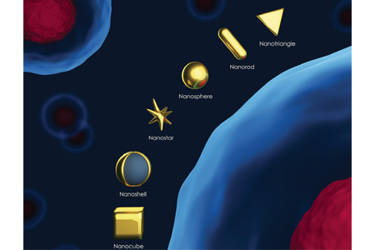Nanogold Particles Using The Nicomp® System

Gold nanoparticles, also sometimes called colloidal gold, possess unique properties that are beneficial to many applications. They are typically synthesized by controlled reduction of aqueous HAuCl4 solution using a reducing agent such as citrate under varying conditions. There are many types of gold nanoparticles based on the size, shape, and physical properties. Applications for gold nanoparticles include drug delivery,1 carriers for drugs such as Paclitaxel,2 tumor detection,3 biosensors, and many others.
The size of gold nanoparticles is a critical physical parameter4 requiring careful measurement. The particle size affects properties such as absorbance wavelength (increased size = longer wavelength), surface plasmon resonance (SPR) peak, intracellular uptake, blood half-life and biodistribution profile (decreasing size = increased blood half-life). The particle size and width can be used as an indication of suspension stability. Surface charge (zeta potential) measurements are also used as an indication of suspension stability.
The most popular technique for particle size and zeta potential analysis is dynamic light scattering (DLS) and electrophoretic light scattering (ELS). The Nicomp® Z3000 system is ideally suited for determining size and zeta potential of gold nanoparticles.
Get unlimited access to:
Enter your credentials below to log in. Not yet a member of Cell & Gene? Subscribe today.
